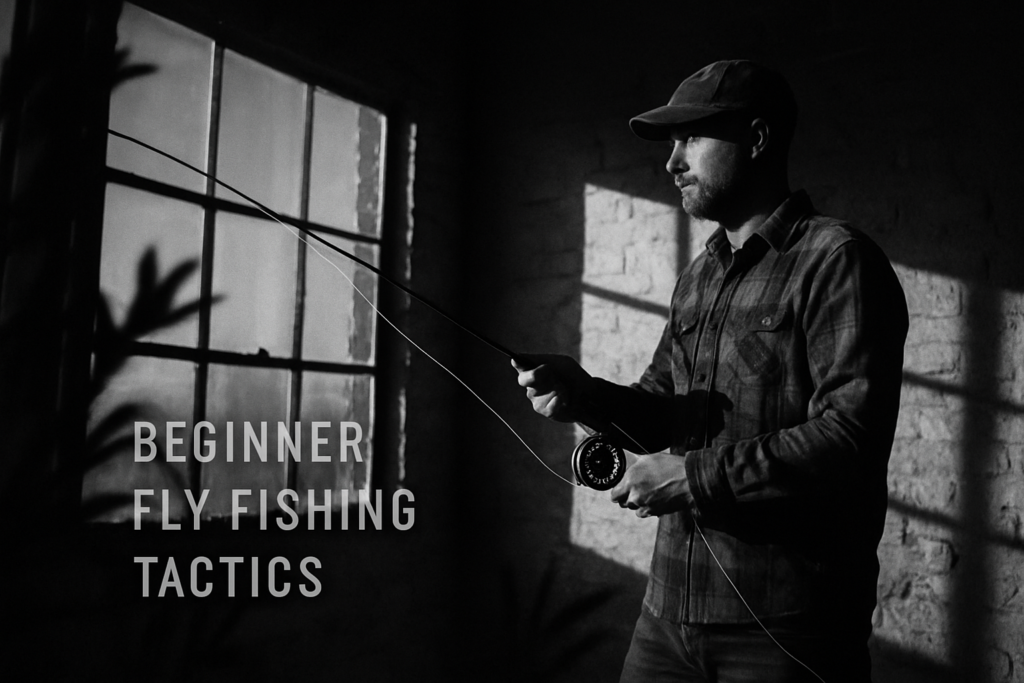Gear Up: The Essentials
Before you think about technique, you need to get your hands on the right gear. Fly fishing isn’t about owning the most expensive setup it’s about having what actually fits your waters and your goals. Let’s break it down.
Rod, Reel, and Line: Where It All Starts
For beginners, a 9 foot, 5 weight rod is the sweet spot. It’s versatile enough for everything from small trout to light bass. Go with medium action gives you enough flex to feel the cast without being too mushy. And no, you don’t need a $700 rod to get started. A quality mid range combo will serve you fine.
Your reel doesn’t need to be fancy it’s mostly a line holder when you’re starting. Just make sure it balances well with your rod and has a decent drag system in case you hook into something wild. As for line, go with a weight forward floating line. It helps load the rod easier for learning casts and works in most situations right out of the gate.
Rod Weight and Action: Why It Matters
Rod weight isn’t about how heavy it feels it’s about what kind of line it’s made to cast. Match the rod’s weight rating to your line. If you’re buying a 5 weight rod, don’t pair it with a 7 weight line and expect grace. The “action” of the rod describes how much it bends. Fast action rods bend less and cast farther, but require better timing. Medium or slow action rods bend more, which gives newer anglers more feel and forgiveness.
Accessory Corner: Leaders, Tippets, and Flies
You’ll also need a tapered leader (9 foot, 4X is a good start) to help your fly turn over softly on the water. Tippet is just the replaceable end of that setup keep a spool or two (4X and 5X) in your pack for when the fish get picky or your line gets chewed up.
Flies? Don’t overthink it. Grab a small box with a few standbys: a handful of dry flies (like Adams or Elk Hair Caddis), a few nymphs (like Pheasant Tails or Hare’s Ears), and maybe a woolly bugger or two for subsurface work. You don’t need to carry a tackle shop just a working handful that matches your local river.
Start simple, keep it functional. You’ll add gear as your skills (and addiction) grow.
Casting Without Frustration
The overhead cast is where most fly fishing journeys start. Keep it simple. No flair, no overthinking. Just line, rod, and rhythm.
The Basic Overhead Cast Step by Step:
- Start Position: Let 10 15 feet of line out. Tip of the rod down, pointing toward the water.
- Lift: In one clean motion, lift the rod smoothly up to about 1 o’clock. Keep your wrist locked and elbow relaxed.
- Back Cast: With a crisp snap, bring the rod back to just past vertical (around 1 o’clock). Stop abruptly. Wait for the line to straighten out behind you you should hear or feel the tension.
- Forward Cast: Drive the rod forward with your forearm, stopping at about 10 o’clock. Let the line shoot out.
- Follow Through: Lower the rod tip gradually as the line lands, aiming for a soft, natural presentation.
Common Beginner Mistakes (and Easy Fixes):
Rushing your tempo: If your cast feels off, slow it down. Let the line fully extend before changing direction.
Too much wrist: Over flexing your wrist makes the rod buckle. Keep your wrist firm and think of the motion as throwing paint off a brush.
Casting too hard: Power doesn’t equal distance. It’s about timing. Smooth acceleration wins.
Roll Casting 101: When and Why
Sometimes, you can’t make a full back cast trees, bushes, other anglers. That’s where the roll cast comes in. It’s a forward cast made from a loop of line resting on the water.
Use a roll cast:
In tight quarters
When wind limits your back cast
To reposition your line quickly without false casting
It’s a tool, not a shortcut. Practice both, and the river will give you fewer surprises.
Reading the Water
You can have the best gear and smoothest cast in the world, but if you’re not putting your fly where fish actually live, it’s all just practice. Start by spotting common holding zones. Riffles are those shallow, choppy runs at the top of pools oxygen rich and often loaded with feeding fish. Seams are the transition zones between fast and slow water, especially where currents split around rocks or logs. Pools, the deeper calm spots below riffles, give trout a comfortable place to rest and watch food drift by. Smart anglers move between these areas with purpose.
Water conditions shift strategy, too. If the water’s cold, fish go deeper and slower. Sunny winter afternoon? That’s when temps inch up just enough to kick start feeding. Clarity changes things as well on a clear day, go light and stealthy. After rain, use bigger flies with more visibility.
Watch the surface. Rising fish tell you bugs are hatching time for a dry fly. No movement up top? They’re feeding below. Try nymphs or streamers. Reading the water isn’t magic. It just takes time, patience, and a little curiosity.
Matching the Hatch

“Matching the hatch” sounds like fly fishing jargon and it is but it’s also one of the simplest ways to improve your odds. All it means is this: pay attention to the bugs the fish are actually eating, and then offer them a fly that looks like one of those bugs. That’s it. No poetic theory, just observation and imitation.
Fish aren’t dumb. They know what’s supposed to be floating by in their environment. If you toss out a fly that looks nothing like what’s naturally around, you’ll likely get ignored. Watch what insects are in the air, on the rocks, or skating the surface. Are there tiny mayflies popping off the water? Maybe fat caddis crawling along the bank? Your job is to take that intel and choose (or tie) a fly that mimics the size, shape, and color of the real thing.
Start simple. Midges, mayflies, and caddis cover a lot of ground. You don’t need an encyclopedia of patterns just enough to match what’s commonly hatching in your area.
Want a deeper dive into other lure options and matching styles? Check out our full bait and lure guide.
Presentation Over Perfection
Fly presentation matters more than the fanciest gear in your bag. You can have the perfect fly, perfectly matched to the hatch but if it drags across the surface like a twig in a current, smart trout will pass it by. The goal is to drift your fly naturally, free floating as if it were the real insect it imitates. To pull that off, you need to understand one key move: the mend.
Mending is a small flick of the wrist after your cast lands, sending a subtle wave through your line to reposition it upstream or downstream. It fixes unnatural pulls caused by conflicting currents. The result? Your fly moves with the water, not against it. Keep mends gentle. You’re guiding, not yanking.
Then there’s the strike. Many beginners miss fish by hesitating or by overreacting. A fish takes your fly, you see the sip or feel the bump, and you either freeze or rip the rod sky high in a panic. Neither works well. Instead, strike with calm intention: a quick lift of the rod tip, firm but controlled. Fish don’t always give you a second chance.
In short, make your fly look alive, let the water work with you, and when the take comes act like you’ve been there before.
Practice Makes Patience
Getting better at fly fishing isn’t about obsession. It’s about habit. Spend 15 20 minutes a couple times a week working on your casting and not just when you’re on the water. Your backyard or a quiet park works fine. Focus on form, not distance. Smooth tempo beats trying to muscle it out every time.
Once you hit the water, leave the hero expectations at home. Some days, even great technique won’t net a fish. Wind, water levels, hatches none of them care how good your rod is. Keep the pressure low and the awareness high. Fishing isn’t a scoreboard sport: treat each session like fieldwork.
And yeah, you’ll have fishless days. Everyone does. Logging them mentally for what they taught you about bugs, water, gear, timing that’s what makes you a better angler, not a stringer of trout. Progress is slow, sometimes invisible. But if you keep showing up, things click. Eventually, the quiet days become the ones you remember best.
One Last Cast: Keep It Simple
Before you start chasing the next ultralight rod or the latest carbon tech reel, pause. Mastering fly fishing starts with core skills, not costly gear. A reliable rod, a decent line, and good habits will outcatch a $1,000 setup used sloppily. The river doesn’t care what’s in your hand it responds to timing, touch, and patience.
Conditions come first. Read the water. Watch the insects. Feel the wind. Matching your strategy to what’s happening in front of you will always beat the latest trend from some gear review video. Trends shift. Tactics rooted in observation stick.
Still hungry for more? Our bait and lure guide goes deep and adds a few more tools to your arsenal.
Keep it fundamental. Keep it field tested. That’s how you grow.


 Karencita Oboyler brings her creative flair and deep appreciation for the natural world to her role at Terra Tactician Tactics. With a background in digital marketing and content strategy, Karencita is dedicated to crafting engaging and visually appealing articles that captivate the platform's diverse audience. Her work focuses on highlighting unique outdoor destinations, offering practical travel advice, and showcasing the beauty of nature through stunning photography and storytelling. Karencita's ability to blend creativity with valuable information has helped Terra Tactician Tactics stand out as a dynamic and compelling resource for outdoor enthusiasts.
Beyond her content contributions, Karencita is passionate about building a vibrant community around the platform. She is committed to fostering an inclusive space where everyone, from seasoned adventurers to curious beginners, feels welcomed and inspired to explore the great outdoors. Her innovative ideas and strategic approach to content development have been instrumental in expanding Terra Tactician Tactics' reach and impact. Karencita's enthusiasm for the project is matched only by her love for nature, making her an integral part of the team and its continued success.
Karencita Oboyler brings her creative flair and deep appreciation for the natural world to her role at Terra Tactician Tactics. With a background in digital marketing and content strategy, Karencita is dedicated to crafting engaging and visually appealing articles that captivate the platform's diverse audience. Her work focuses on highlighting unique outdoor destinations, offering practical travel advice, and showcasing the beauty of nature through stunning photography and storytelling. Karencita's ability to blend creativity with valuable information has helped Terra Tactician Tactics stand out as a dynamic and compelling resource for outdoor enthusiasts.
Beyond her content contributions, Karencita is passionate about building a vibrant community around the platform. She is committed to fostering an inclusive space where everyone, from seasoned adventurers to curious beginners, feels welcomed and inspired to explore the great outdoors. Her innovative ideas and strategic approach to content development have been instrumental in expanding Terra Tactician Tactics' reach and impact. Karencita's enthusiasm for the project is matched only by her love for nature, making her an integral part of the team and its continued success.